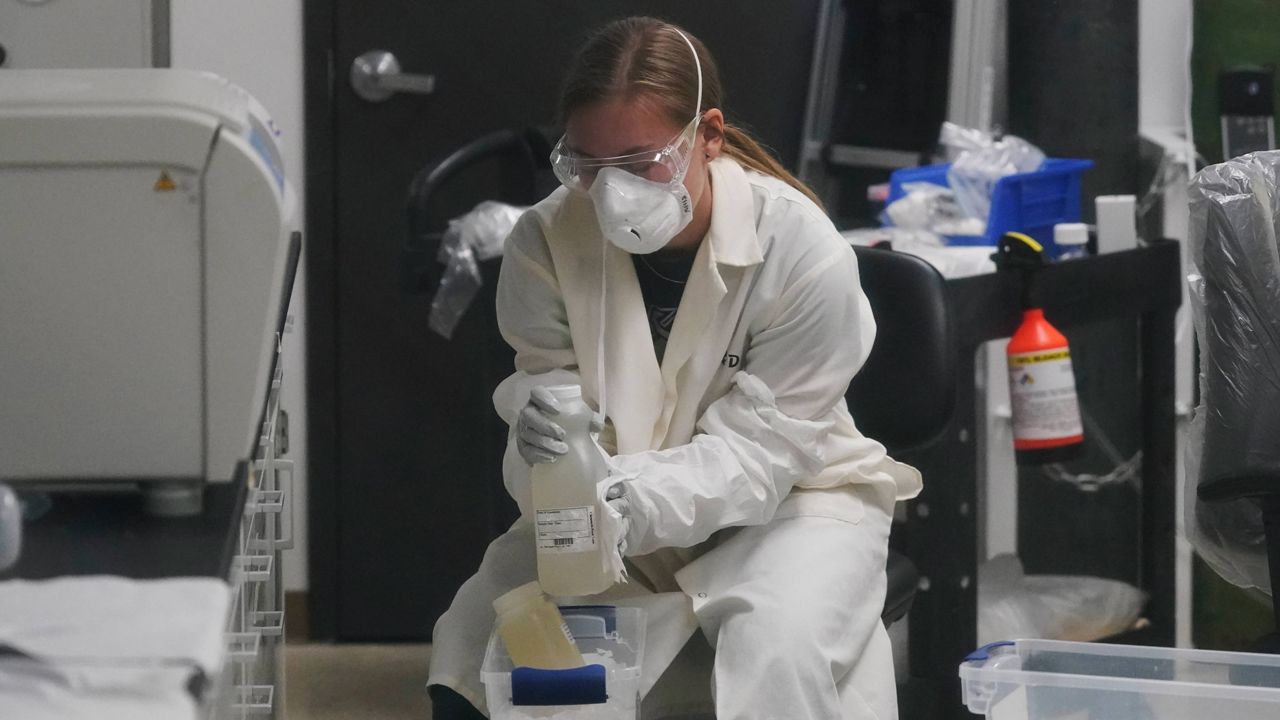More and more health officials are turning to sewage to help track the COVID-19 pandemic.
What You Need To Know
- Scientists in several states, as well as some other countries, are analyzing wastewater to help track the COVID-19 pandemic
- SARS-CoV-2, the virus that causes COVID-19, can be shed in an infected person’s feces, and sewage samples at wastewater treatment plants can help tell the story of how widespread the virus is in a community at a given time
- According to Biobot Analytics, a wastewater epidemiology company, coronavirus levels in sewage samples nationwide are currently at their highest levels of the pandemic
- For example, patients can shed the virus in their feces before they develop symptoms, meaning the sewers could provide the first clues about an outbreak in a community
Since the start of the virus outbreak, the number of reported coronavirus cases has largely relied on testing. But it’s always been believed to be an imperfect system. After all, there have been asymptomatic cases, mild cases in which infected people might not seek testing or outside treatment, unequal access to health care from community to community and the increasing demand of at-home rapid tests, of which results may not be reported to health officials.
But scientists in several states, as well as some other countries, are also analyzing wastewater, which could be a more reliable gauge.
SARS-CoV-2, the virus that causes COVID-19, can be shed in an infected person’s feces. Sewage samples at wastewater treatment plants can help tell the story of how widespread the virus is in a community at a given time, and regular testing can show whether the virus has become more or less prevalent over time.
According to Biobot Analytics, a wastewater epidemiology company, coronavirus levels in sewage samples nationwide are currently at their highest levels of the pandemic. That might not be surprising considering the Centers for Disease Control and Prevention’s latest seven-day average for new daily cases also is at a record high — 316,277. But wastewater can reveal other details about the pandemic, experts say.
For example, patients can shed the virus in their feces before they develop symptoms. That means the sewers could provide the first clues about an outbreak in a community.
In Orange County, Florida, last month, wastewater samples showed that the omicron variant was the dominant COVID-19 strain despite that there had been few clinical cases of omicron infection at the time.
A similar phenomenon happened in Houston, where omicron showed up in wastewater about 10 days before the first lab-confirmed case of the variant.
“As public health officials around the world monitor the new Omicron variant, it is now more important than ever to continue investing in wastewater-based epidemiology,” Biobot Analytics said in a blog post last month.
Among the other states where scientists are analyzing sewage samples to monitor COVID-19 are California, Colorado, Idaho, Massachusetts, Missouri and North Carolina.
The Boston Globe reported last week that coronavirus levels in Boston-area wastewater were rising extremely fast in recent weeks and have reached record highs. For instance, as of Wednesday, virus traces in the the southern sample of the Massachusetts Water Resources Authority’s territory had more than tripled over the previous six days.
Wastewater can also be used to track polio, illegal drugs and obesity, experts say.



